 Marcos Gonzales • updated: Nov 12 2024
Marcos Gonzales • updated: Nov 12 2024
Best Montessori Materials for Ages 0-6: The Complete Guide
Would you believe that Dr. Maria Montessori spent over 45 years perfecting her educational materials? That's how crucial these tools are to child development, that's why I and so many others believe in her work! I've spent years working with Montessori materials, and I'm excited to share exactly which ones are worth your investment. In this complete guide, we'll explore the best Montessori materials for each age group, from birth to age 6, helping you make informed decisions for your child's developmental journey. This of this as your montessori education .
Understanding Montessori Materials: The Essentials
What Makes a Material Truly "Montessori"
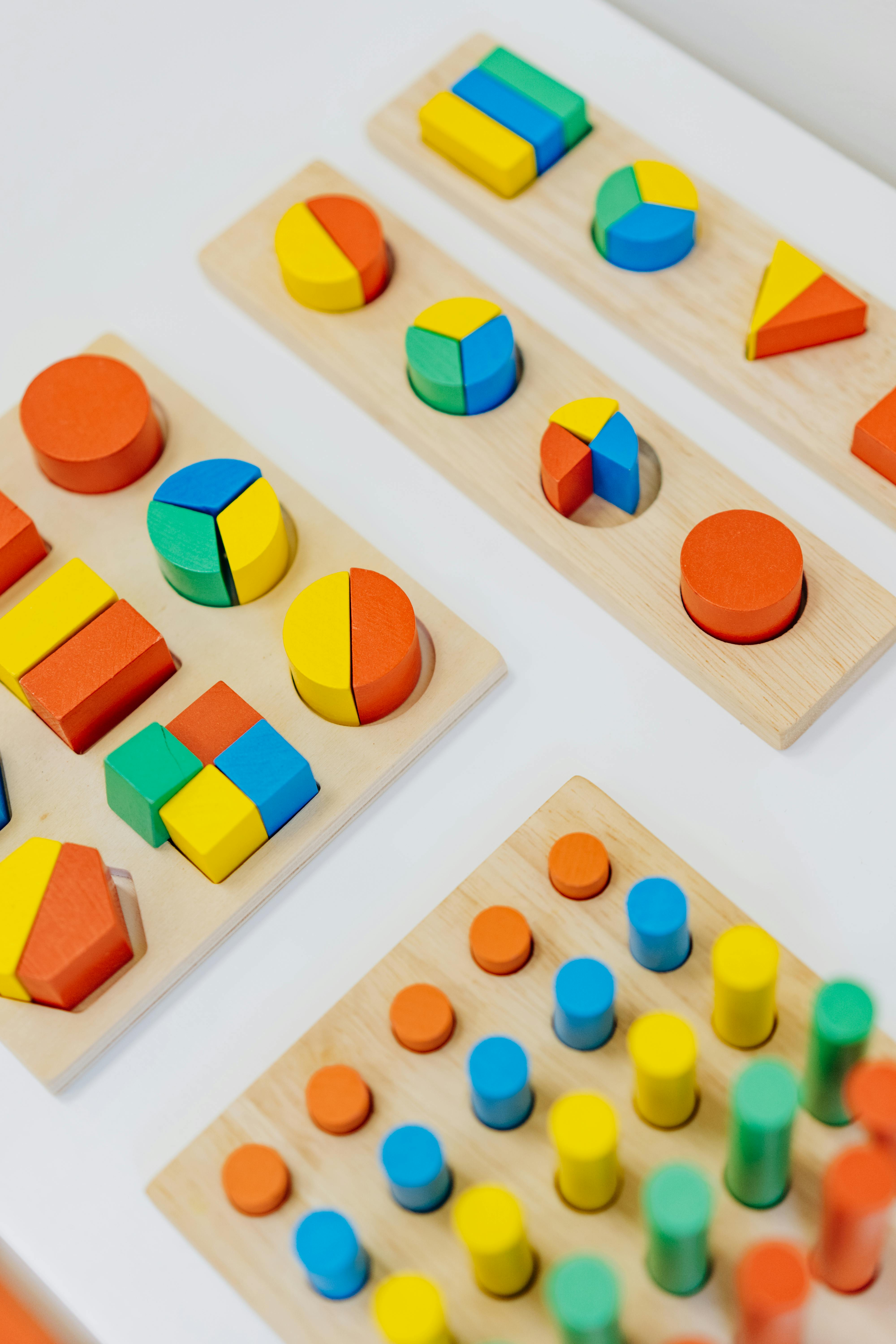
According to Webster's dictionary, Montessori means "relating to a system for training young children emphasizing free physical activity, informal and individual instruction, early development of writing and reading, and extended sensory motor training." But the true essence of Montessori materials goes much deeper. At their core, authentic Montessori materials share these key characteristics:
- Child-Directed Learning: Rather than battery-operated toys with flashing lights and buttons, Montessori materials require active engagement - spinning, turning, pushing, pulling, and manipulating.
- Control of Error: Materials are designed so children can recognize and correct their own mistakes without adult intervention.
- Isolation of Quality: Each material isolates one specific concept or skill for clarity of learning.
- Natural and Beautiful: Made from high-quality, natural materials that are aesthetically pleasing and durable.
The Four Main Categories of Montessori Materials

Montessori materials are thoughtfully organized into four distinct categories, each serving a specific purpose in your child's development:
1.Practical Life Materials
These materials mirror real-life experiences and develop independence through everyday activities, which can be montessori at home:
- Food preparation tools (vegetable peelers, spreading knives)
- Cleaning implements (child-sized brooms, mops, dusters)
- Garden tools and nature exploration materials
- Self-care items (dressing frames, grooming tools)
2. Sensorial Materials
Designed to refine your child's senses and discrimination abilities through:
- Visual discrimination (Pink Tower, Brown Stairs)
- Tactile exploration (Touch Tablets, Fabric Boxes)
- Auditory development (Sound Cylinders)
- Size and dimension work (Knobbed Cylinders)
3. Language Materials
These materials help children develop essential language skills:
- Movable Alphabet for letter recognition and phonics
- Picture-word matching cards to build vocabulary
- Reading and writing preparation activities
- Early reading books and storytelling materials
4. Math Materials
Hands-on tools that allow children to explore mathematical concepts:
- Number Rods for quantity and sequence learning
- Spindle Boxes and Counting Bears for one-to-one correspondence
- Golden Beads for place value understanding
- Sandpaper Numbers and Number Rods for numeral recognition
Authentic Montessori vs. Montessori-Inspired Materials
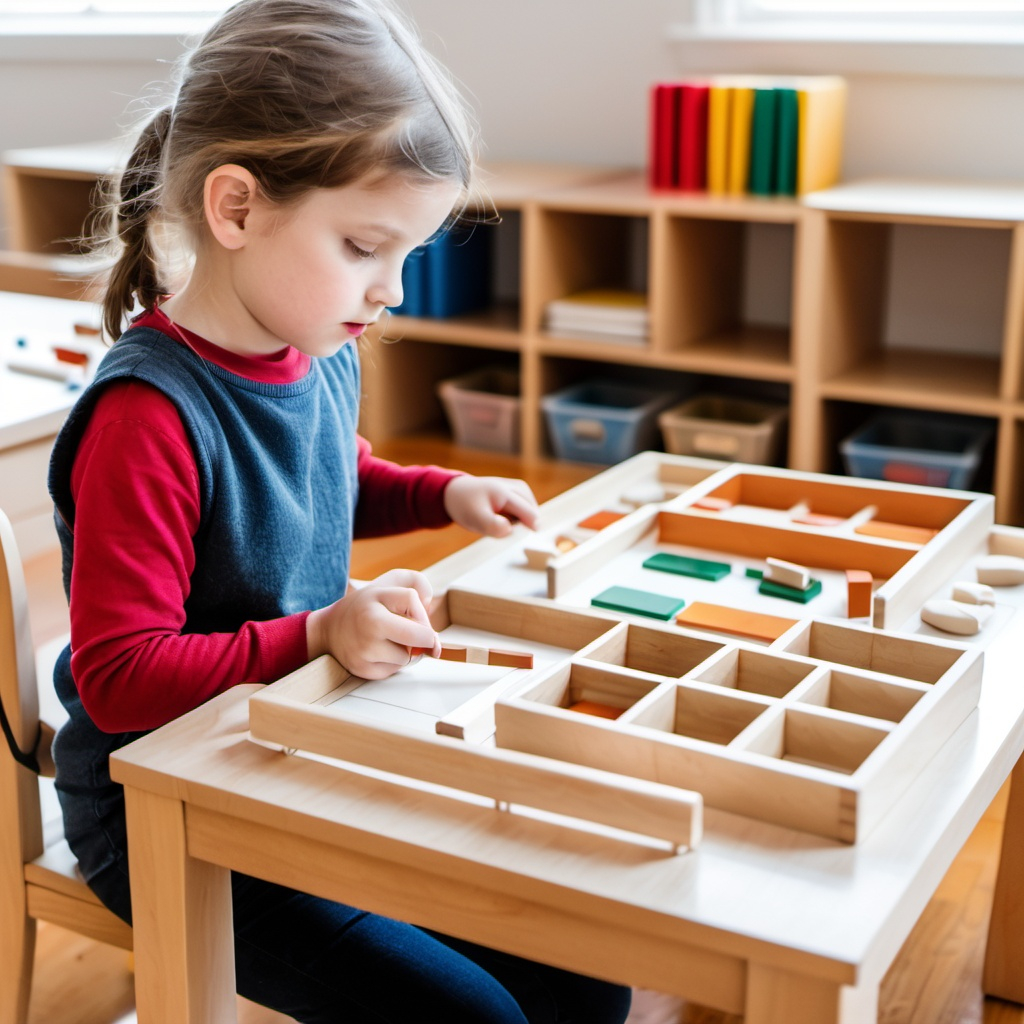
It's important to understand the difference between authentic Montessori materials and those that are simply "Montessori-inspired." Authentic Montessori materials are carefully designed to adhere to the principles and methodology developed by Dr. Maria Montessori. They feature precise specifications, high-quality construction, and a focus on sensory-rich exploration, that' s the montessori philosophy .
On the other hand, Montessori-inspired materials may share some visual similarities but lack the depth of design and focus on child-directed learning. While they can be a more budget-friendly option, it's crucial to select materials that truly align with the Montessori approach to support your child's development effectively. You don't want to miss out of brain development to save a few bucks, and that is what I and many other parents often do, simply because of lack of knowledge.
Best Montessori Materials for Infants (0-12 months)
Visual Development Materials (0-3 months)

In the first months of life (age 0-6), your infant's visual system is rapidly developing. Montessori materials that encourage visual exploration and aid in the development of hand-eye coordination are essential during this stage:
- High-contrast mobiles (e.g., Munari Mobile)
- Object permanence boxes
- Unbreakable mirrors
- Rattles and grasping toys
Grasping and Motor Skills (3-6 months)
As your baby grows, they'll begin to develop better hand-eye coordination and the ability to grasp objects. Montessori materials that encourage reaching, grasping, and simple manipulation are ideal for this stage:
- Wooden rattles and shakers
- Texture balls and soft blocks
- Large, smooth wooden rings
- Cloth books with crinkly pages
What I like to do is have a bag full of at least one of each of the listed items above to make sure my baby is developing in each of the sensory stages.
Movement and Exploration (6-9 months)
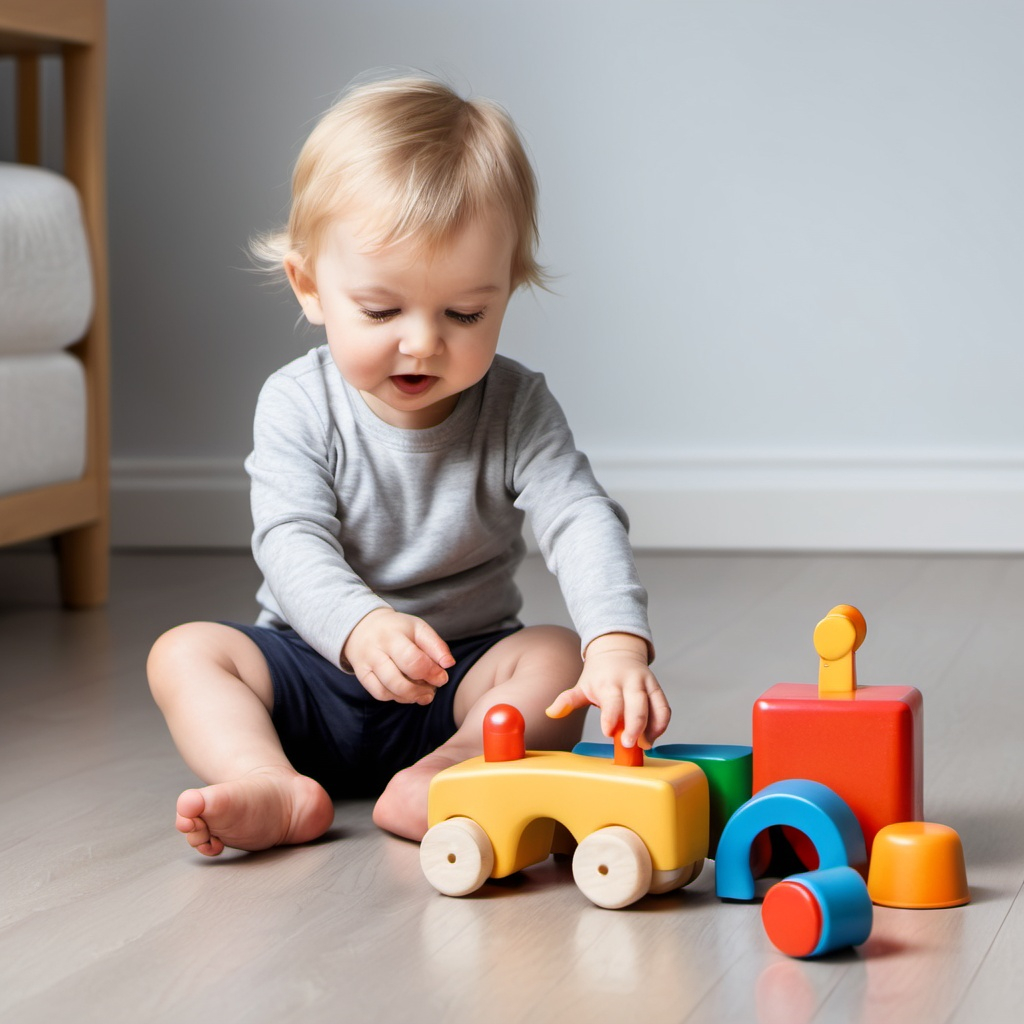
Once your child is able to sit up and begin exploring their environment, Montessori materials that promote movement, balance, and spatial awareness become important:
- Knobbed cylinders for grasping and stacking
- Large, sturdy push/pull toys
- Soft, lightweight objects for batting and throwing
- Textured mats and rugs for sensory exploration
Don't be afraid of your child failing (well maybe if you have tile get them at least a helmet, and of course if they are at the beginning stages then help them) its going to happen, they need to learn how to fall on their hands and not face plant and that is part of learning process.
First Learning Materials (9-12 months)
In the latter part of the first year, your child will start to show interest in more purposeful learning. Montessori materials that introduce basic concepts and encourage problem-solving are ideal. Thinks of puzzles and games that make your child think, that's the montessori method .
- Knobbed puzzles and shape sorters
- Nature-based objects for naming and classification
- Large knobbed buttons and lacing activities
- Musical instruments for auditory exploration
Essential Materials by Developmental Stage
While the specific materials may vary, here's a summary of the key Montessori items to focus on during your child's first year:
- 0-3 months: Mobiles, mirrors, rattles, grasping toys
- 3-6 months: Texture balls, cloth books, wooden rings
- 6-9 months: Knobbed cylinders, push/pull toys, textured mats
- 9-12 months: Puzzles, shape sorters, nature objects, musical instruments
What I like to do is have a bag filled with one of each of these items during each stage. And whenever they pass the age mark swap out the toys for new ones. You can even mismatch some of the age toys based off your baby's preferences.
Essential Materials for Toddlers (1-3 years)
Practical Life Materials for Independence
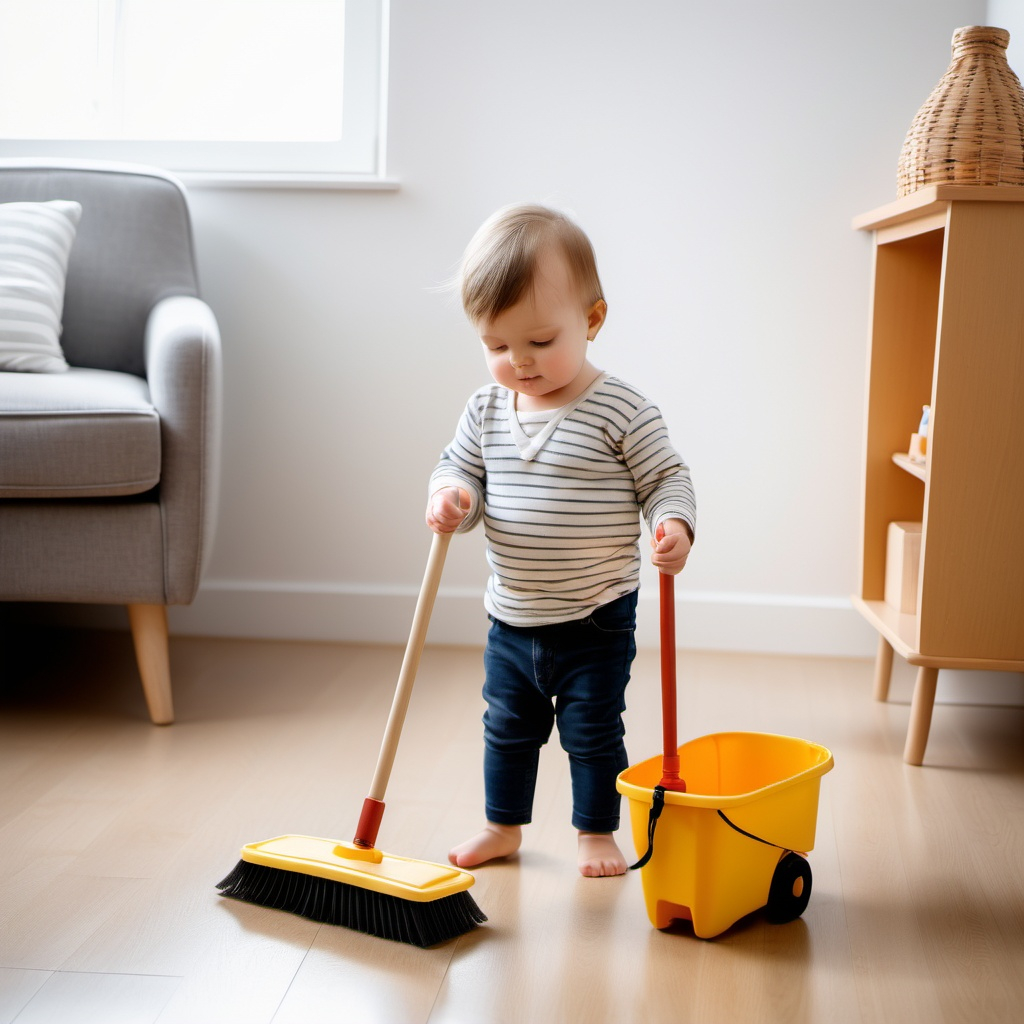
As your child enters the toddler years, Montessori practical life materials become crucial for developing independence, coordination, and self-care skills:
- Dressing frames (zipping, buttoning, lacing)
- Child-sized cleaning tools (brooms, mops, dusters)
- Food preparation activities (slicing, spreading, pouring)
- Flower arranging and gardening materials/Toolbox with tools to assort
Fine Motor Development Materials
Toddlers are rapidly developing their fine motor skills, so Montessori materials that challenge and refine these abilities are essential:
- Knobbed and knobless cylinders for grasping and stacking
- Puzzles with increasing levels of difficulty
- Threading beads, lacing cards, and peg boards
- Transferring activities (spooning, pouring, tongs)
Language Development Tools

During the toddler years, Montessori language materials help build vocabulary, phonics awareness, and early reading skills:
- Picture-word matching cards
- Sandpaper letters for tactile letter recognition
- Metal insets for pre-writing practice
- Early reading books and storytelling sets
Make sure at night or at least one time during the day you spent some time reading to your little one to expose them to new words.
First Mathematical Concepts
Toddlers are beginning to grasp mathematical ideas, and Montessori materials make these concepts tangible and engaging:
- Number rods for quantity and sequence learning
- Spindle boxes for one-to-one correspondence
- Counting bears and sorting trays
- Sandpaper numerals for number recognition
Sensory Exploration Materials
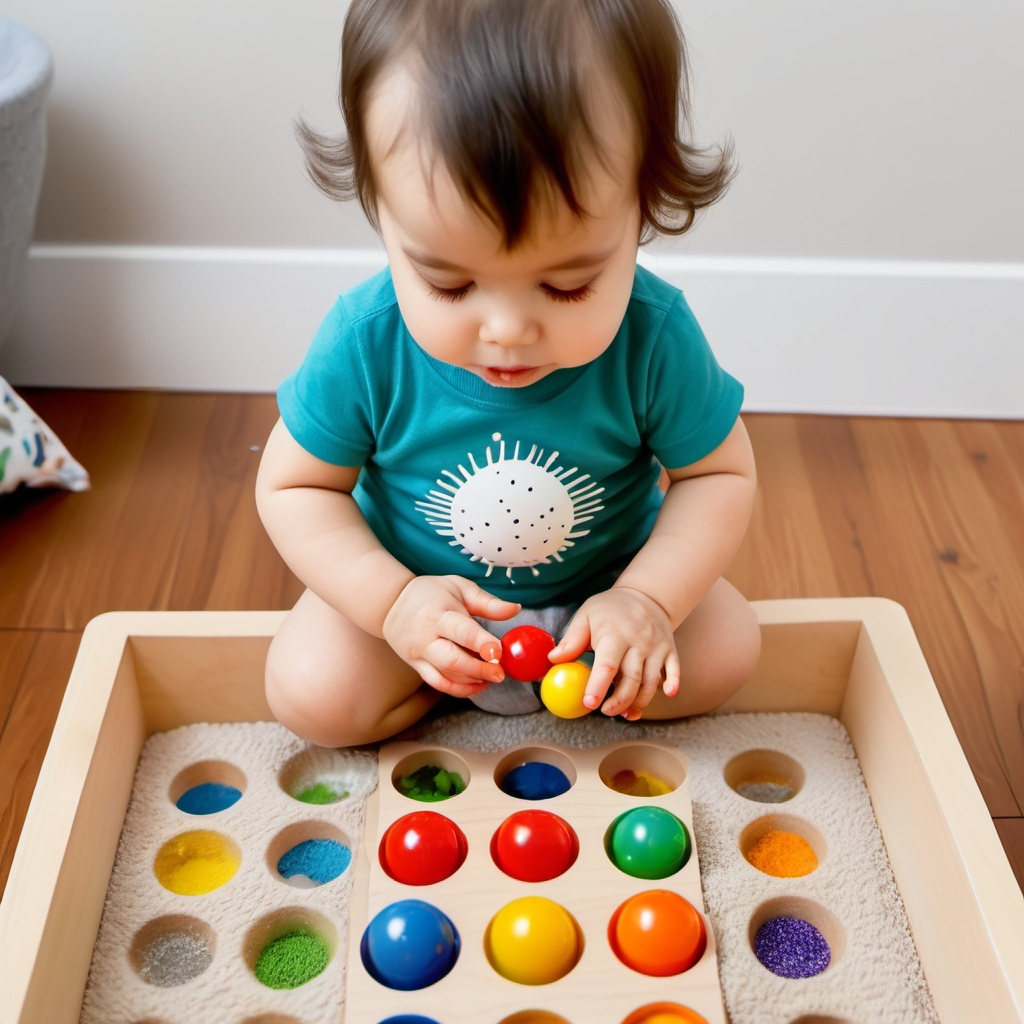
Toddlers are sensory explorers, so Montessori sensorial materials that refine their perceptions are crucial:
- Sound cylinders for auditory discrimination
- Fabric boxes and touch tablets for tactile exploration
- Color tablets and geometric solids for visual learning
- Smelling bottles and tasting activities
Core Materials for Primary Age (3-6 years)
Sensorial Materials and Their Purpose
Montessori sensorial materials are designed to help children refine their senses and develop important perceptual skills:
- Visual: Pink Tower, Brown Stairs, Geometric Solids
- Tactile: Rough and Smooth Boards, Fabric Boxes
- Auditory: Sound Cylinders, Music Bells
- Olfactory: Smelling Bottles
- Gustatory: Tasting Jars
Language and Writing Materials
Montessori language materials focus on developing phonics awareness, letter-sound correspondence, and early writing skills:
- Sandpaper Letters for tactile letter recognition
- Movable Alphabet for letter manipulation and spelling
- Metal Insets for pre-writing practice and pencil grip
- Reading books and classified vocabulary cards
Mathematics and Number Work
Montessori math materials allow children to explore quantitative concepts, operations, and place value in a hands-on way:
- Number Rods and Spindle Boxes for quantity/sequence
- Golden Beads for place value understanding
- Bead Chains and Cards for addition and multiplication
- Stamp Game for subtraction and division
Cultural and Science Materials
Montessori cultural materials introduce young children to the world around them through geography, biology, and more:
- Continent maps and land/water forms
- Nomenclature cards for botany and zoology
- Science experiments and exploration activities
- Timeline of life and historical materials
Art and Creative Expression
While not as structured as other Montessori material categories, art and creative activities are essential for holistic development:
- Drawing and painting with high-quality art tools
- Collage materials using natural elements
- Beeswax modeling and sculpting
- Musical instruments and movement activities
Investment Guide: Where to Spend vs. Save in 2024
Must-Have Premium Materials
Some Montessori materials are worth the investment due to their quality, durability, and adherence to Montessori principles. These include:
- Pink Tower and Brown Stairs (Nienhuis or Gonzagarredi)
- Movable Alphabet (Nienhuis or Kid Advance)
- Knobbed Cylinders and Geometric Solids (Nienhuis)
- Metal Insets (Nienhuis)
When to Choose Budget-Friendly Alternatives
While premium Montessori brands offer superior quality, there are many budget-friendly options that can work just as well, especially for younger children or introductory materials:
- Practical life tools (spatulas, brooms, etc. from IKEA or hardware stores)
- Beginner puzzles and shape sorters (from educational toy brands)
- Early language materials like picture cards (homemade or from Amazon)
- Basic math materials like number rods (DIY or from budget retailers)
DIY Montessori Materials That Work Well
Many Montessori materials can be easily created at home using everyday household items. This allows you to customize for your child's interests and save money. Some great DIY options include:
- Sensorial materials (texture boards, sound cylinders)
- Practical life activities (pouring stations, flower arranging)
- Early math manipulatives (number rods, spindle boxes)
- Language games (letter matching, vocabulary cards)
Cost-Benefit Analysis
When deciding where to spend and where to save, consider the long-term value and developmental impact of each material. Premium Montessori brands often justify their higher prices through superior quality, attention to detail, and precise alignment with Montessori principles. However, many budget-friendly or DIY options can be just as effective, especially for younger children or introductory materials.
Long-Term Investment Strategy
Building your Montessori material collection is a journey, not a race. Start with the essential, high-priority items, then gradually expand your collection as your child grows. Focus on quality over quantity